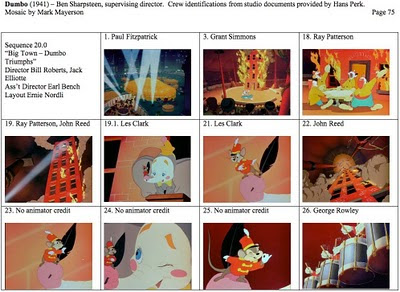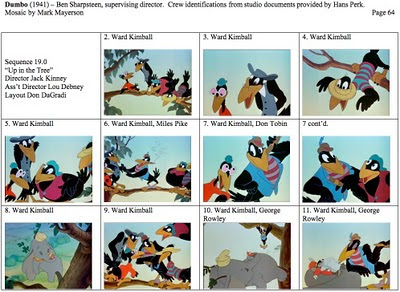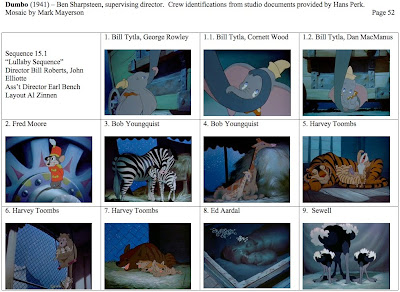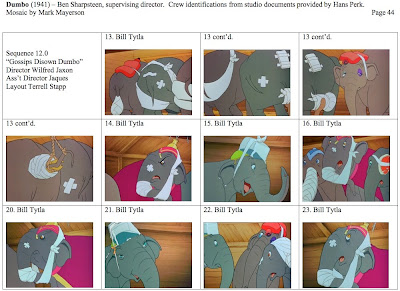Dumbo Part 25

This sequence shows the aftermath of Dumbo's flying. The montage is a great snapshot of the public's preoccupations at the end of the 1930's. Dumbo setting an altitude record relates to the public's ongoing romance with aviation at the time. People like Charles Lindbergh, Amelia Earhart, and Wiley Post were all celebrated aviators of the period (the latter two dying in flight). "Dumbombers for defense" relates to the war in Europe, which the United States would join in 1941. The Hollywood contract had been sign of success at least since the 1910s, when performers started to make big money and in the '30s, movies and radio were the two major mass media. Dumbo's contract also explains Timothy's absence from the final scenes. What follows the montage is the transformation of the circus. There have previously been scenes of Casey, Jr. in dark and stormy weather. He's now bedecked with flowers and chugging effortlessly in the bright sunlight. ...











